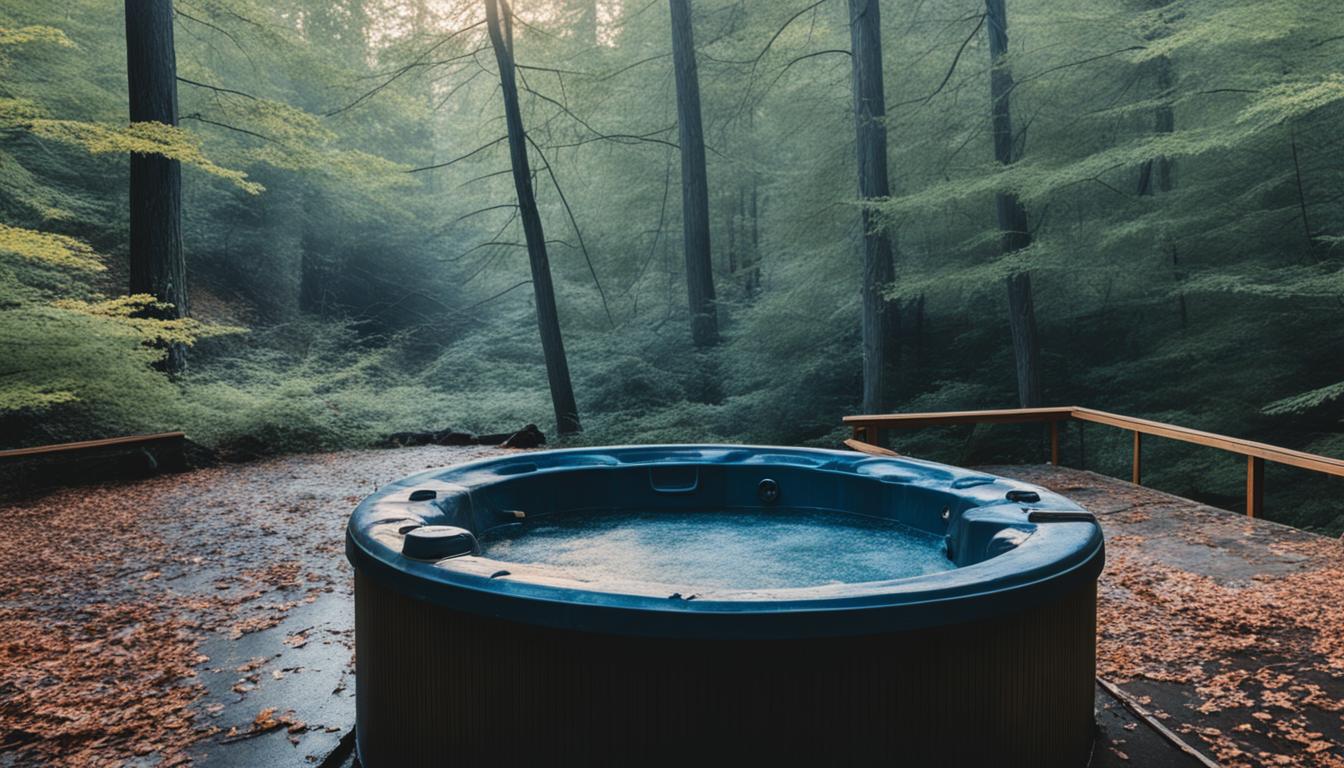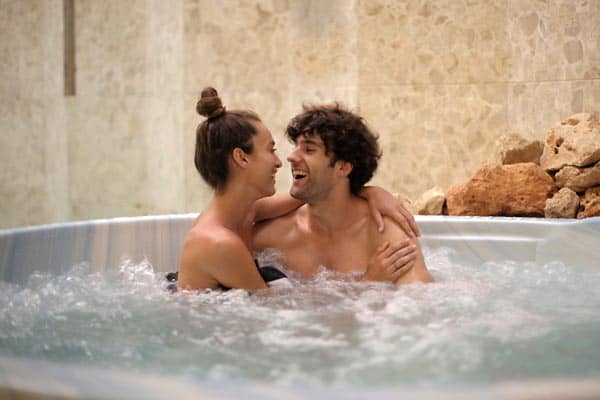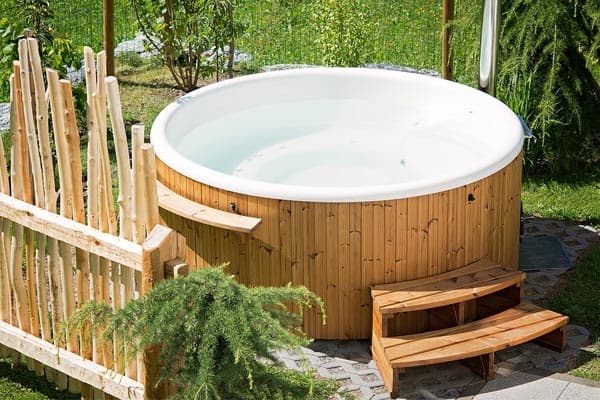How Long Can a Hot Tub Stay Empty? Maintaining Your Spa
Hot tubs are a luxurious addition to any home, offering relaxation, health benefits, and a space for socializing and unwinding. However, there may be instances when you need to leave your hot tub empty for an extended period. Whether for repairs, winterization, or preparing for seasonal use, the question arises: how long can a hot tub stay empty?
It’s a common belief that leaving a hot tub empty for too long can damage it and cause costly repairs. But is that the case? Can a hot tub endure a lengthy empty period without any consequences? In this article, we will explore the duration for which a hot tub can stay empty and how to maintain it properly during these empty periods.
Before diving into the details, it’s essential to understand the risks of leaving a hot tub empty and why proper maintenance is essential. Let’s explore the impact of an empty hot tub on its components and the effects of weather.
The Importance of Evaluating Your Hot Tub’s Usage and Care
Proper maintenance and care are crucial for your hot tub’s longevity and optimal performance. Regularly evaluating hot tub usage and care ensures continued operation and enjoyment.
Monitoring the frequency and duration of hot tub usage allows you to determine the appropriate maintenance schedule. By understanding how often and for how long your hot tub is being used, you can plan for routine cleaning, water treatment, and equipment inspections.
Regular cleaning and chemical testing are essential to maintain safe and balanced water quality in your hot tub. This ensures that your hot tub remains a healthy and hygienic environment for relaxation and enjoyment.
Inspecting the hot tub’s various components and equipment is crucial for identifying potential issues or necessary repairs. It allows you to address problems promptly and prevent them from escalating into more significant and costly damages.
Assessing the Risks of Leaving a Hot Tub Empty
Consequences for Exposed Components in an Unfilled Spa
Leaving a hot tub empty for an extended period can have detrimental effects on the exposed components of the spa. Without water to provide lubrication and protection, these components may be at risk of damage. The heating element, pumps, filters, plumbing, and seals are particularly susceptible to the negative effects of being left unfilled.
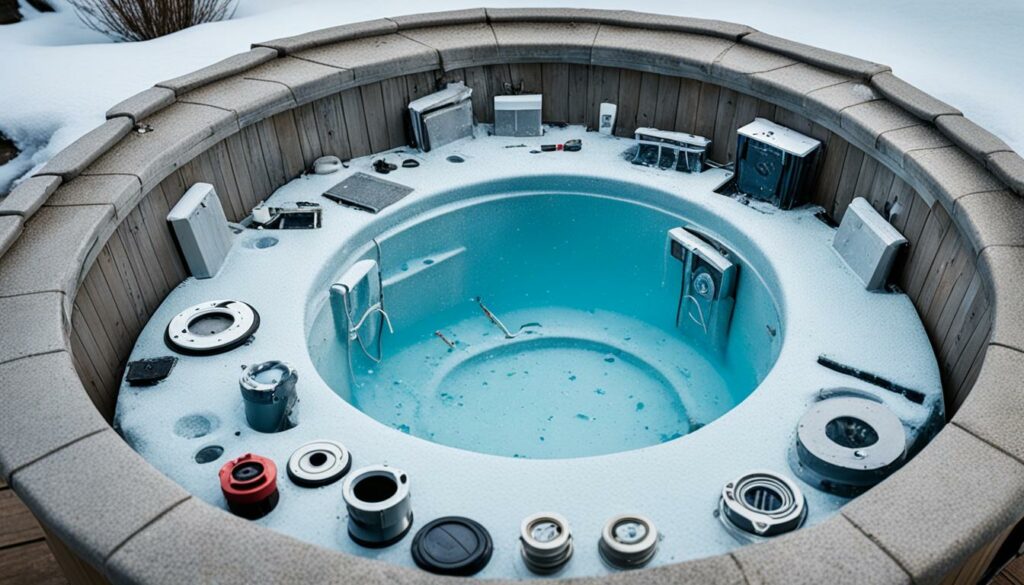
Without the regular flow of water, the heating element can overheat, causing it to malfunction or even burn out. The pumps responsible for circulating the water can also suffer damage due to prolonged inactivity. Dust, debris, and other particles can accumulate in the filters, clogging them and diminishing their effectiveness.
The plumbing system in an empty hot tub can be susceptible to issues such as cracks, leaks, or freezing. The pipes can freeze and expand when exposed to low temperatures, leading to potential rupture or damage. Additionally, the seals that prevent water leakage can dry out and become brittle, making them less effective in maintaining a watertight environment.
Empty Hot Tub Duration: How Long is Too Long?
The duration for leaving a hot tub empty depends on several factors, including the specific model, weather conditions, and maintenance practices. While keeping a hot tub empty for a short period is generally safe, anything beyond a few weeks can increase the risk of damage to the spa’s components.
It is advisable to avoid leaving a hot tub empty for extended periods, especially during extreme weather conditions such as freezing temperatures or heavy rainfall. The longer a hot tub remains empty, the greater the likelihood of damage to the exposed components and the overall integrity of the spa.
Effects of Weather on an Unattended Hot Tub
Weather conditions can significantly impact an unattended hot tub, even when empty. Extreme heat, cold, humidity, and precipitation can all affect the spa’s structural integrity and functionality.
Hot and sunny weather can cause the hot tub’s surface to fade and deteriorate over time. UV rays can damage the interior and exterior components, including the cover and the shell. Additionally, prolonged exposure to direct sunlight can degrade the quality of the hot tub cover, reducing its ability to insulate and protect the spa.
Conversely, cold weather and freezing temperatures can pose significant risks to an empty hot tub. The freezing and thawing cycle can cause expansion and contraction within the plumbing and other components, leading to cracks and leaks. Properly winterizing the hot tub and protecting it from freezing conditions to minimize the potential for damage is crucial.
| Weather Condition | Effects on an Empty Hot Tub |
|---|---|
| Extreme heat | Fading, deterioration, and damage to the surface, cover, and shell |
| Freezing temperatures | Risk of cracks, leaks, and damage to plumbing and components |
| UV exposure | Deterioration of interior and exterior components |
How Long Can a Hot Tub Stay Empty? Insights and Best Practices
These guidelines will help ensure the longevity and proper maintenance of your hot tub during periods of non-use.
Insights for leaving a hot tub empty:
- Consider the purpose and duration of the empty period: Understanding why your hot tub will be left empty and for how long can inform the necessary precautions and maintenance steps.
- Please consider the specific needs of your hot tub model: Different hot tubs may have unique requirements for extended periods of non-use. Consulting the manufacturer’s guidelines or seeking professional advice can provide valuable insights.
Best practices for an empty hot tub:
- Proper cleaning: Before leaving your hot tub empty, thoroughly clean it to remove any contaminants or debris. This will help maintain the spa’s overall cleanliness and condition.
- Maintenance: Regular maintenance, such as checking and balancing the water chemistry, will help prevent issues arising during an empty period. Testing the water quality and adding the necessary chemicals regularly is essential.
- Securing the hot tub: To protect it from external elements and potential damage, ensure it is properly secured during the empty period. This includes securely fastening the cover, ensuring all access points are tightly sealed, and potentially using a cover lock or strap to prevent unwanted entry.
Maintaining an Empty Hot Tub: Preventative Measures
Proper Way to Leave Your Hot Tub Empty
Before leaving a hot tub empty, it is essential to drain and clean it thoroughly to remove any contaminants or debris. This ensures that the hot tub remains in good condition and prevents potential issues when it is eventually filled again.
Follow these steps to leave your hot tub empty properly:
- Turn off the power to the hot tub.
- Remove the hot tub cover and store it in a clean and dry area.
- Drain the hot tub completely by following the manufacturer’s instructions.
- Thoroughly clean the hot tub, including the surfaces, filters, and jets.
- Remove any remaining water using a wet vacuum or towel.
Cleaning and Securing Your Spa During Extended Absences
Here are some measures you can take to clean and secure your spa during extended absences:
- Follow the steps mentioned earlier for draining and cleaning the hot tub.
- Remove and clean all filters and store them safely and dryly.
- Add a sanitizing agent to the water to prevent bacteria or algae growth.
- Securely fasten the hot tub cover.
- Inspect the hot tub cover and seal any gaps or tears to prevent pests and debris from entering.
Winterization Techniques to Prevent Damage
Proper winterization is crucial in regions with freezing temperatures to prevent damage to your hot tub. Freezing temperatures can cause significant harm to the plumbing and components of the hot tub. To winterize your hot tub, follow these steps:
- Please turn off the power to the hot tub and disconnect it from the power source.
- Drain the hot tub completely, including all water from the plumbing.
- Open all the valves and fittings to allow any remaining water to drain out.
- Clean and remove all filters, then store them in a safe place.
- Add antifreeze specifically formulated for hot tubs to protect the remaining water in the plumbing.
- Cover the hot tub with a winter cover for additional insulation and protection.
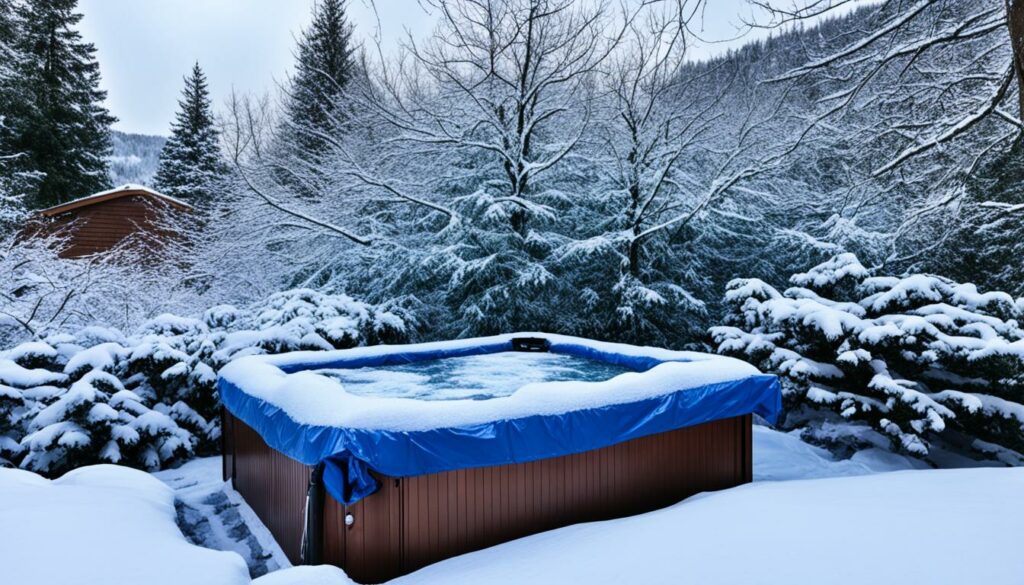
| Preventative Measures | Proper Way to Leave Your Hot Tub Empty | Cleaning and Securing Your Spa During Extended Absences | Winterization Techniques to Prevent Damage |
|---|---|---|---|
| 1. Drain and clean the hot tub thoroughly. | 1. Turn off the power to the hot tub. 2. Remove the hot tub cover and store it in a clean and dry area. 3. Drain the hot tub completely by following the manufacturer’s instructions. 4. Thoroughly clean the hot tub, including the surfaces, filters, and jets. 5. Remove any remaining water using a wet vacuum or towel. |
1. Follow the earlier steps for draining and cleaning the hot tub. 2. Remove and clean all filters and store them safely and dryly. 3. Add a sanitizing agent to the water to prevent bacteria or algae growth. 4. Securely fasten the hot tub cover. 5. Inspect the hot tub cover and seal any gaps or tears to prevent pests and debris from entering. |
1. Turn off the power to the hot tub and disconnect it from the power source. 2. Drain the hot tub completely, including all water from the plumbing. 3. Open all the valves and fittings to allow any remaining water to drain out. 4. Clean and remove all filters, then store them safely. 5. Add antifreeze specifically formulated for hot tubs to protect the remaining water in the plumbing. 6. Cover the hot tub with a winter cover for additional insulation and protection. |
Recommended Timeframe for Empty Hot Tub Storage
The ideal duration for hot tub storage depends on several factors, such as the hot tub’s condition, location, and climate.
While there may not be a strict rule for every situation, limiting the storage period to no more than a few months is generally advisable. Extended storage beyond this timeframe may result in issues such as deterioration of internal components, structural damage, or mold and bacteria growth.
To ensure the longevity of your hot tub during storage, here are some essential tips:
- Thoroughly clean the hot tub before storing it to remove any debris, dirt, or contaminants.
- Ensure the hot tub cover is securely fastened to protect it from dust, pests, and other external elements.
- Store the hot tub in a dry, well-ventilated area to minimize the risk of moisture damage.
- Cover the hot tub with a weather-resistant tarp to provide an extra layer of protection.
- Consider using a hot tub cover conditioner or protectant to preserve the integrity and lifespan of the cover.
Following these recommendations will help ensure that your hot tub remains in good condition while not in use. If you have any doubts or concerns regarding hot tub storage, it is always best to consult the manufacturer’s guidelines or seek professional advice.
| Storage Condition | Recommended Timeframe |
|---|---|
| Indoor storage with controlled temperature and humidity | 3-6 months |
| Outdoor storage in mild climate | 2-3 months |
| Outdoor storage in extreme climate | 1-2 months |
Reviving Your Hot Tub After a Prolonged Period of Disuse
After a prolonged period of disuse, reviving your hot tub requires careful assessment and strategic cleaning to ensure its safe and efficient operation. One crucial consideration is identifying when a hot tub is too old to fix. Factors such as extensive damage, unavailability of replacement parts, and cost-effectiveness play a significant role in this decision-making process.
Identifying When a Hot Tub is Too Old to Fix
To determine if your hot tub is beyond repair, it is advisable to consult with a professional who can evaluate its overall condition and usability. They can assess the extent of the damage and offer expert advice on whether repairing or replacing the hot tub is the most practical option. Considering the availability of replacement parts and the potential costs can also help inform your decision.
Cleaning Strategies for Neglected Hot Tubs
A neglected hot tub may require thorough cleaning to eliminate built-up dirt, debris, and bacteria. Remove leaves, twigs, or other visible contaminants from the surface and drain the old water.
Utilize a hot tub-specific cleaning solution to scrub the interior surfaces, jets, and filters. Rinse everything thoroughly with clean water to ensure the removal of any chemical residues.
Steps to Safely Reactivate Your Spa Systems
Once the cleaning process is complete, follow these steps to reactivate your hot tub’s systems safely:
- Refill the hot tub with fresh water according to the manufacturer’s guidelines.
- Balance the water chemistry by testing and adjusting the pH and sanitizer levels.
- Restart the hot tub’s heating and filtration systems, ensuring they function correctly.
- Allow the hot tub to run for a few hours to circulate and heat the water.
- Perform a final water quality test to ensure the chemical levels are within the recommended range.
Regular maintenance and ongoing care are essential to keeping your hot tub in optimal condition. When reviving your hot tub after a prolonged period of disuse, consult the manufacturer’s guidelines and seek professional assistance to address any specific concerns or questions.
FAQ
Q: How long can a hot tub stay empty?
A: The duration that a hot tub can safely stay empty depends on various factors, such as the time of year and proper maintenance. A properly secured hot tub can sit empty in the summer without issues. However, it is essential to drain and winterize the hot tub in the winter to prevent freezing and damage to the components.
Q: What are the consequences for exposed components in an unfilled spa?
A: Leaving a hot tub empty for an extended period can damage the exposed components, such as the heating element, pumps, filters, plumbing, and seals. Without water to provide lubrication, these components may dry out, crack, or become brittle.
Q: How long is too long for an empty hot tub?
A: The recommended timeframe for storing an empty hot tub depends on various factors, including the hot tub’s condition, location, and climate. Generally, it is advisable to limit the storage period to no more than a few months to prevent potential damage or degradation of the hot tub.
Q: What are the effects of weather on an unattended hot tub?
A: Weather conditions, such as extreme temperature fluctuations, can impact an unattended hot tub. In colder climates, freezing temperatures can cause the water in the hot tub to freeze, potentially damaging the components. In warmer climates, prolonged exposure to direct sunlight can fade, warp, or crack the hot tub’s exterior surfaces.
Q: What are some insights and best practices for emptying a hot tub?
A: When leaving a hot tub empty, it is essential to consider the purpose and duration of the empty period, as well as the specific needs of the hot tub model. Best practices involve properly cleaning, maintaining, and securing the hot tub during the empty period to prevent damage and preserve its longevity. Consulting the hot tub manufacturer’s guidelines and seeking professional advice can provide further insights and best practices for leaving a hot tub empty.
Q: What is the proper way to leave your hot tub empty?
A: Before leaving a hot tub empty, it is essential to drain and clean it thoroughly to remove any contaminants or debris. Properly securing the hot tub cover and ensuring all access points are tightly sealed can prevent unwanted pests and debris from entering the empty hot tub.
Q: How should I maintain an empty hot tub?
A: Proper maintenance of an empty hot tub involves taking preventative measures to protect its components and ensure longevity. This includes regular cleaning, securing the hot tub during extended absences, and properly winterizing the hot tub to prevent damage from freezing temperatures. Following the manufacturer’s guidelines and seeking professional advice can help ensure proper maintenance of your empty hot tub.
Q: What is the recommended timeframe for empty hot tub storage?
A: The recommended timeframe for empty hot tub storage depends on various factors, such as the hot tub’s condition, location, and climate. While there is no set timeframe, limiting the storage period to no more than a few months is generally advisable to prevent potential damage or degradation of the hot tub.
Q: How can I safely revive my hot tub after a prolonged period of disuse?
A: Safely reviving a hot tub after a prolonged period of disuse involves a few key steps. This includes identifying when a hot tub is too old to fix and may require replacement, implementing cleaning strategies for neglected hot tubs to remove any buildup or contaminants, and safely reactivating the spa systems by checking and adjusting water chemistry, ensuring proper water circulation, and testing all equipment and components.
